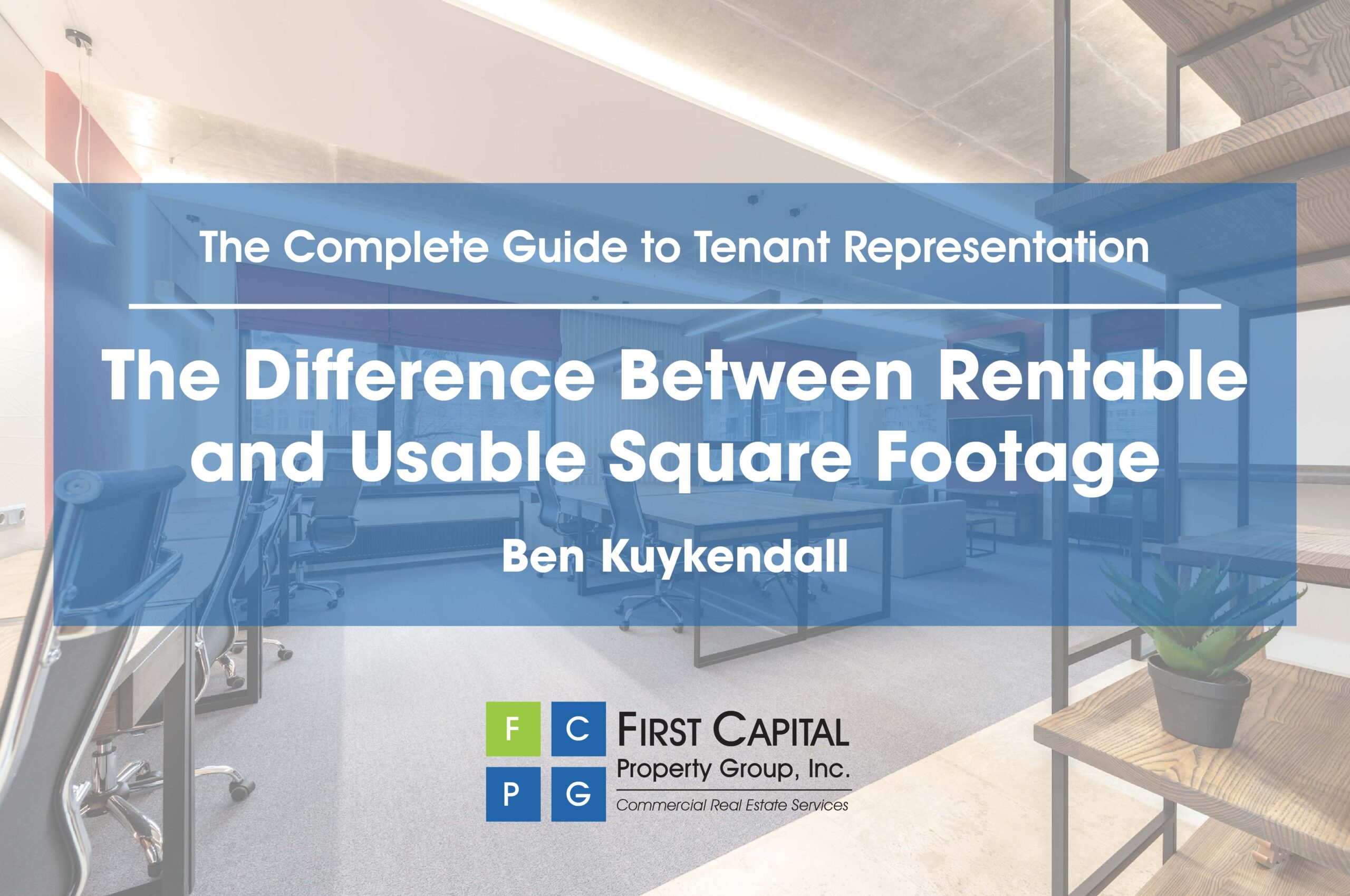
The Complete Guide to Tenant Representation
The Difference Between Rentable and Usable Square Footage
Ben Kuykendall
December 2022
When looking for commercial office space to lease, you will come across the terms “Rentable Square Footage” and “Usable Square Footage.”
It’s important to understand the difference between the two, as they can have a big impact on your business. Amount of space is one of the most important factors in a commercial lease, so you want to make sure you are getting what you need and not paying for more (or less) than that.
To put it simply, Rentable Square Footage (RSF) is the total amount of space that you will be renting i.e., paying for, while Usable Square Footage (USF) is the amount of space that you will be able to use1.
Rentable Square Footage
The industry standard method for measuring office space is called the BOMA Measurement Standard (ANSI/BOMA Z65.1-2017). According to this standard, rentable square footage includes not only the usable square footage of an office suite, but also a proportionate share of the entire office building’s common areas2.
These common areas can include things like hallways, restrooms, stairwells, lobbies, and HVAC closets.
Usable Square Footage
The usable square footage is the amount of space within an office suite available for the exclusive use of the tenant and excludes all common areas. The usable square footage is usually less than the rentable square footage.
Load Factor or Common Area Factor
The load factor (also known as the Common Area Factor or sometimes Core Factor) is used to calculate the rentable square footage from the building’s gross square footage.
The load factor is expressed as a percentage and is calculated by dividing the rentable square footage by the building’s useable square footage3.
For example, if a building has 20,000 gross square feet and 17,500 useable square feet, then the common areas are 2,500 square feet.
The equation would work this way: 20,000 ÷ 17,500 = 1.14
Once the load factor is established (14% in this case) the amount of rentable square footage for each individual suite can be determined.
The equation would work this way: Tenant USF x Load Factor = Tenant RSF
In this example, let’s say a tenant was interested in a 1,500 USF office suite at the building. Using the calculated load factor of 14% would have the following result:
210 SF (14% of 1,500) would be added to the suite’s USF, resulting in 1,710 RSF being used to calculate the base rental rate.
Reversing The Load Factor
The inverse of this example can also be helpful in deciding between leasing two comparable spaces.
Most commercial office listings share the RSF number, not the USF number. So, reversing the load factor equation can help you determine how much usable space you’re actually getting from what you’re paying for.
Say you’re torn between two similar 2,500 SF office suite listings. If each space is leasing for the same base rate, but one has a 1.14 load factor, and the other has a 1.25 load factor, you can quickly determine which of the 2,500 SF spaces provides more useable space for your business, and is a better value.
2,500 RSF ÷ 1.14 = 2,192.98 USF
2,500 RSF ÷ 1.25 = 2,000 USF
Knowing how to determine usable versus rentable square footage when looking at a commercial lease agreement will help make sure you’re getting what you need in terms of space for your business, without paying for too much space or receiving too little useable space.
Another option would be to work with a commercial real estate professional to help navigate the lease process and get answers to questions like these on your behalf.
First Capital Property Group would be glad to walk alongside you through your leasing process. If you’re looking for tenant representation in the Central Florida market, including Orlando, St. Cloud, Altamonte, Lake Nona, Maitland, and beyond contact our brokerage department at 407.872.0177.
